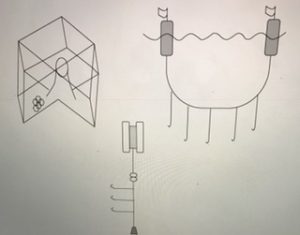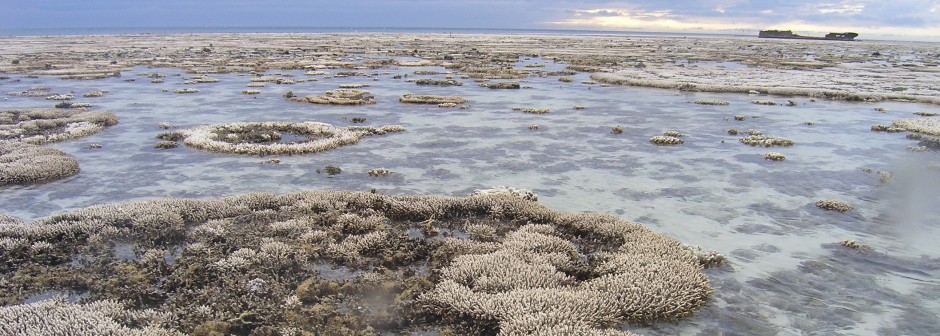Wow! This sustains the livelihoods of a plethora of living things. Now, how can I exploit it? In general when many people observe something important for the environment, variations of the aforementioned statement come to mind. Needless to say, coral reefs are not above these exploitations. While I could preach to you about the multitudes of ways in which coral reefs are being mistreated by humans, I have chosen to focus on one example—reef fisheries.
To put it simply, reef fisheries are places where coral reef fishes are captured for commercial purposes. While it might not seem like a topic of importance, the industry accounts for approximately 5% of total global catches and averages around $5 billion dollars annually.1 With each catch, a reef’s ecosystem is being disrupted. Some disruptions are not as serious as others, but under many circumstances, fishermen employ questionable fishing techniques. For example with ‘ghost fishing’, we see fishermen failing to retrieve lost traps, thus allowing traps to continue harming reefs and their inhabitants.
Poisons and explosives are heavily utilized by fishermen to acquire fish. This process is normally implemented in parts of Africa and Southeast Asia.2 In this process, we observe fishermen dropping stolen or homemade explosives into the water because it can kill fish over large distances.3 This method requires little effort on the fishermen’s parts. However its effects on reefs are ghastly given that reefs are never fully able to recover from such explosions after being repeatedly subjected to them. An example of these negative effects can be observed in Tanzanian reefs. Figure 1 offers insight into how a booming coral reef can be completely destroyed as a result of explosive fishing.

Figure 1. Image of coral reef in Tanzania that has been completely destroyed by explosive fishing. © Source: Digital Journal 4
In regards to using poison as a method of catching fish, sodium cyanide is dissolved and poured into reef areas and allowed to spread for a while before the fishermen collect the injured or dead fishes that were successfully poisoned.5 As a result of interacting with cyanide, coral reefs and its living constituents die. Cyanide poisoning is detrimental not only to reefs, but also to the humans who consume the fish. Some effects include nausea and even death if cyanide is consumed in great enough quantities. Needless to say, this practice along with explosive fishing is considered illegal, but due to their abilities to catch a lot of fish with minimal effort, these practices still continue to be heavily utilized by fishermen across the globe. In fact, it is estimated that ~1 million kilograms of cyanide has been squirted into Philippine coral reefs since cyanide fishing began in the 1960s. 6

Figure 2. Pictorial representation of different fishing techniques—trap (right), handline (center) and longline (left). ©
Source: The Biology of Coral Reefs (Biology of Habitats) 7
Other more common techniques for reef fishing employ the usage of traps, longlines and handlines. Traps are heavily utilized in the Caribbean and Asia. They vary based on the species one wishes to capture, but they are usually made of wire or bamboo. 8 They can be set in a variety of regions, such as deeper banks, shelfs or reef slopes. Baits are tailored to the organism one wishes to trap. A handline is the tool most people associate with fishing; it is a single line held in the hand, and it contains a hook with bait on it. Longlines contain a long main line from which small lines with hooks branch off. Figure 2 offers a pictorial representation of the three reef fishing techniques mentioned in this paragraph.
While this issue seems relatively black and white, it’s far from it. Yes, exploitation is a bad thing, but the reef fishing industry also serves as a source of food for people living in nearby coastal areas that are relatively poor and offer few alternatives to reef fishing.9 This is what makes the topic of reef fishing so important. It calls to light issues that not only negatively impact reefs, but also negatively impact humans. Consequently in subsequent blog posts, we will delve deeper into the potential impacts of reef fishing as well as propose different solutions that could potentially satisfy both humans and the organisms that make up coral reefs.
References:
1 Sheppard, C., Davy, S. K., & Pilling, G. M. (2012). The biology of coral reefs. Oxford: Oxford University Press.
2 Jennings, S. (1996). Impacts of fishing on tropical reef ecosystems. Jstor, 25(1).
3 Jennings, S., & Kaiser, M. J. (1998). The Effects of Fishing on Marine Ecosystems. Advances in Marine Biology, 201-352. doi:10.1016/s0065-2881(08)60212-6
4http://www.digitaljournal.com/img/8/4/3/0/8/3/i/2/7/6/p-large/blast-1_1.JPG
5 Barber, C. (1997). Sullied seas: strategies for combating cyanide fishing in Southeast Asia and beyond. Popline.
6 Barber, C. (1997). Sullied seas: strategies for combating cyanide fishing in Southeast Asia and beyond. Popline.
7 Sheppard, C., Davy, S. K., & Pilling, G. M. (2012). The biology of coral reefs. Oxford: Oxford University Press.
8 Gomes, I., Erzini, K., & Mcclanahan, T. R. (2013). Trap modification opens new gates to achieve sustainable coral reef fisheries. Aquatic Conservation: Marine and Freshwater Ecosystems, 24(5), 680-695. doi:10.1002/aqc.2389
9 Sheppard, C., Davy, S. K., & Pilling, G. M. (2012). The biology of coral reefs. Oxford: Oxford University Press.

